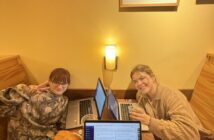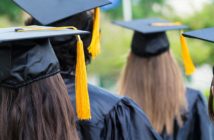One key yardstick of measuring academic excellence depends on how fair our universities conduct student assessment par the quantum of class delivery from the faculty. Academic assessment to a very large extent depends on how best the faculty employs the appropriate pedagogy in ensuring that the right level of knowledge, values and understanding are derived from the teaching – learning contract.
As much as the faculty make a remarkable input in the classroom delivery process, then the other aspect of the contract behooves on students to accomplish a task of learning through research, critical thinking and problem solving. It is this part that raises the substantive issue under consideration – PLAGIARISM.
What is plagiarism?
As defined by Webster’s Third New International Dictionary, “To steal and pass off as one’s own (the ideas or words of another) : use (a created production) without crediting the source: to commit literary theft: present as new and original an idea or product derived from an existing source.”
Likewise the Random House Dictionary, Second Edition defines plagiarism as, “The unauthorized use or close imitation of the language and thoughts of another author and the representation of them as one’s own original work; something used and represented in this manner.”
One key word that presents a strong case for consideration from the authoritative sources above is “STEAL”. There is no compromise! Then it becomes obvious that the stealing is of ideas, thoughts, language or expression, an invention or a bonafide property of some else.
How is this replicated in our normal classroom scenario; Test – based, examination account, research and or problem solving? As your indulgence is craved, carefully ponder over these thought – provoking questions and place them in their appropriate context in this discourse.
If a candidate is able to memorize and produce, everything verbatim, information, lecture notes or summaries of texts for his or her professor, during an examination or a test, would that be tantamount to plagiarism?
If a student is presented with a theory, an authoritative propagation or an idea and same appears in one examination of a kind, using his own expression but the same idea, would that also be considered as plagiarism in the context?
What if a piece of work is produced verbatim from an original source, the source, having been fully credited as such, but the final piece presented as a new work under the new author?
With your thoughts provoked, you are invited to express a sound position on the subject matter either as a faculty, student, writer or a copyright owner without prejudice to the content of this work.
It is equally interesting how modern Information Communication Technology (ICT) enables the system to verify other people’s work, particularly in academic settings, to authenticate the validity of the piece, ownership or otherwise. Notable among such electronic networks include “Turnitin”, “Grammarly” to mention but a few.
With the invention of this new technology, one is keen to know to what extent, has the act of plagiarism been curbed.
Is there a universally prescribed definition of punitive measures for culprits in our universities and colleges in particular in the U.S.?
What are the legal stipulations on plagiarism in the U.S. and to what degree are they employed and applied?
It is on record, that from 1992 – 2005 alone, 162 findings of scientific misconduct were published, out of which, 8 were responsible for plagiarism alone, and 11 for plagiarism with falsification and/or fabrication of research records. The Congressionally mandated regulation 42 Code of the Federal Regulations Part 50, Subpart A, legitimizes the Office of Research Integrity (ORI) on this task.
Another area of concern, particularly to university authorities and other academic institutions of learning and the society at large is the cause of plagiarism in our schools.
Two major kinds of plagiarism are identified, namely, Purposeful Plagiarism and Accidental or Unintentional Plagiarism; but both attract negative consequences. As their names imply, the Purposeful or Intentional Plagiarism occurs from a deliberate and calculated attempts from the culprit while the Accidental plagiarizer does so without a premeditation and knowledge of its occurrence. Whichever, way it happens, the main concern is that, it is untraditional, illegal and abominable, and the university community frowns upon it vehemently.
For Dr. Heather Parker, a faculty at Saint Leo University, presenting to your students- “Plagiarism” as a complete module or a course, and taking a systematic approach to teach the module, raises enough self-awareness as a start. To her, another practical approach is to discuss the very topics given as assignment in advance, in one context. Then asking students to bring their sources of possible references should be a whole assignment on its own. She further explains awareness on plagiarism as a practical skill which ought to be learnt and carried into your career world and not solely limited to the academic setting.
“Know it and avoid it at all cost…; it is important to address it and not to ignore it”, says Dr. Parker.
It is equally important to establish the fact, that examination malpractice which forms a major component of this canker has no single potency of dragging the academic integrity of the university of attendance of the culprits in the mud, but also, it casts a slur on the examination cheat. Often such individuals with this challenge graduate into the world of business only to become a disgrace to themselves and their establishments because of the loopholes they create by their inabilities to maintain standards and/or deliver at work.
Par it core values, Saint Leo University like any other credible university in the U.S. strives to maintain excellence, integrity and moral uprightness; it therefore leaves no stone unturned in its efforts to curb the phenomenon if not completely eradicated. But it is a clarion call, so all and sundry must be on the bandwagon!




